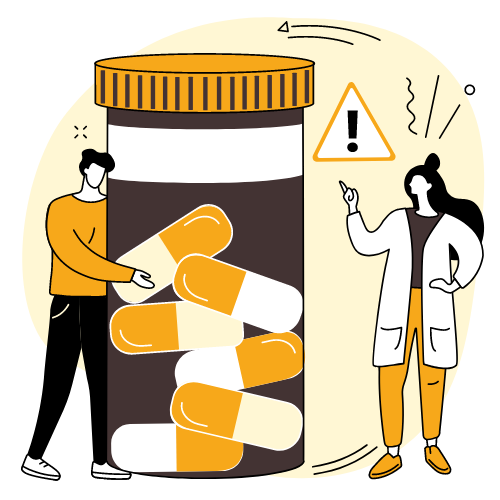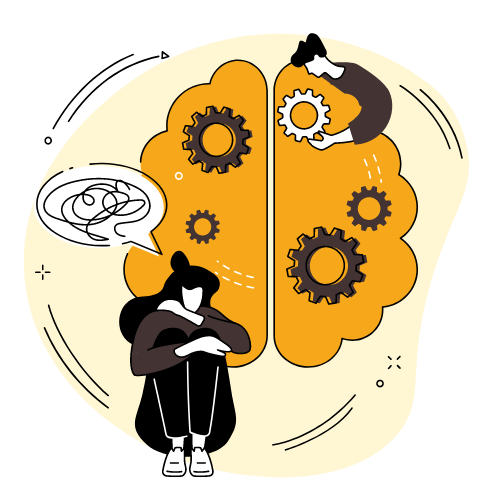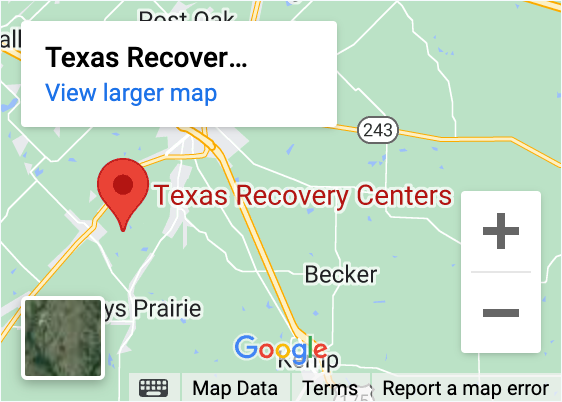The stages of opiate withdrawal can vary from person to person but typically follow a timeline of approximately five to 10 days. During this time, the body is adjusting to the absence of opiates. Symptoms can range from uncomfortable physical sensations like muscle aches and nausea to more intense psychological symptoms such as anxiety and depression.
This can be challenging, but hope and support are available through opiate addiction treatment programs and medication-assisted therapy. Contact Texas Recovery Center to learn more about treatment programs and what might be the best course for your recovery.
Opiates and Opiate Use
Opioids are a class of drugs, including heroin, synthetic opioids, and prescription painkillers. Opiates, specifically, are opioids naturally derived from the poppy plant. These drugs are often used to treat pain and slow down the central nervous system. Some common examples of opiates and opioids include:
- Oxycodone (Oxycontin or Percocet)
- Morphine
- Codeine
- Hydrocodone (Vicodin)
- Methadone
- Heroin
- Fentanyl
While opioids are effective in treating pain, they are habit-forming and can quickly lead to dependence.
Opiate Withdrawal Symptoms
Because long-term misuse of opioids can lead to tolerance and dependence when someone stops using these drugs, their body and brain struggle to adjust. The result is often a series of uncomfortable symptoms known as an opioid withdrawal that can last several days or longer. Some common opiate and opioid withdrawal symptoms include:
- Aches and pain
- Sweating or chills
- Nausea
- Vomiting or diarrhea
- Insomnia
- Mood swings
- Anxiety
These withdrawal symptoms can vary in severity and often lead to relapse if not adequately treated. Those experiencing opiate withdrawal should seek medical assistance for a safe detoxification process.
Opiate Withdrawal Timeline
The opioid withdrawal timeline and the symptoms vary from person to person and from opioid to opioid. Most people on short-acting opioids like codeine, hydromorphone, oxycodone, and morphine will begin experiencing the first signs of opiate withdrawal within eight to 24 hours after taking the drug.
These symptoms will peak after one to three days and then fade after about a week when acute opiate withdrawal ends. In contrast, long-acting opioids like extended-release and controlled-release tablets of these drugs have a withdrawal timeline that begins later, at around 36 hours after the last dose. Symptoms peak during days three and four but should subside by the two-week mark. In both cases, psychological symptoms may persist for weeks or months later.
Stages of Opiate Withdrawal
Although everyone is unique, some distinct stages of opioid withdrawal are based on the symptoms and intensity. The stages of opiate withdrawal include early withdrawal, peak period, late, acute, and post-acute withdrawal.
Stage 1 – Early Withdrawal
The first stage of opiate withdrawal typically begins within eight to 24 hours after the last use for short-acting opiates or closer to 36 hours for long-acting prescription opiates. Early opiate withdrawal symptoms generally include:
- Runny nose
- Tearing up
- Excessive sweating
- Chills
- Goosebumps
- Muscle and joint pain
- Stomach cramps
- Anxiety
- Insomnia
Stage 2 – Peak Period
During this stage, symptoms from early opiate withdrawal tend to increase in intensity over the next several hours, and new symptoms also arise. After one to three days for short-acting opioids and three to four days for long-acting opioids, the severity of these symptoms usually hits their peak. Symptoms during this stage of opiate withdrawal tend to be both physical and psychological.
At this point, the person may feel flu-like and emotionally distressed. It is crucial for people to maintain adequate levels of hydration and nutrition as well as have emotional support. Peak opiate withdrawal symptoms include:
- Rapid breathing
- Racing heart
- Nausea and vomiting
- Diarrhea
- Fever
- Depression
- Mood swings
- Intense drug cravings
Stage 3 – Late Acute Withdrawal
In the last stage of acute opiate withdrawal, physical symptoms will begin to wane so that a medical detox will be near its end. On the other hand, some psychological symptoms may linger, or new ones may even arise. Symptoms of late acute opioid withdrawal include:
- Drug cravings
- Irritability
- Anxiety
- Restlessness
- Depression
- Insomnia
Post-Acute Withdrawal Syndrome
Post-acute withdrawal syndrome is part of the timeline for quitting opiates, where the physical symptoms tend to all be gone, but psychological symptoms remain or come and go. Because these symptoms may last weeks or even months, additional opioid addiction treatment is often needed after detox to help the person maintain their abstinence from opiate use. Post-acute withdrawal symptoms may include:
- Sleep problems or disturbances
- Anxiety or panic
- Depression
- Mood swings
- Irritability
- Increased sensitivity to stress
Factors Impacting the Opiate Withdrawal Timeline
The exact opiate withdrawal timeline can vary widely because its length and symptoms depend on several variables. Some factors that can impact the opiate withdrawal timeline include:
- Type of opioid
- Route of administration
- Severity of addiction
- Tolerance
- Regular dosage
- Polysubstance use
- Previous opioid use
- State of mental health
- Overall health
- Medical history
- Care during detox
The factors listed above can also affect the severity of opioid withdrawal symptoms during each stage. For example, someone with a severe opiate addiction and high tolerance who regularly takes large doses is likely to experience more intense symptoms and a longer opiate withdrawal timeline than someone with a milder addiction taking lower doses.
Additionally, receiving medical detox or having access to medication-assisted treatment can make opiate withdrawal more bearable and potentially shorten the timeline. Ultimately, every person’s experience with opiate withdrawal will be unique to them.
Find an Opiate Addiction Treatment Program at Texas Recovery Center
Our opiate addiction treatment program at Texas Recovery Center offers personalized, comprehensive care to address physical and psychological needs during opiate withdrawal and beyond. We provide medication-assisted treatment, individualized therapy approaches, experiential activities, and access to medical professionals, all in a serene setting.
Our residential addiction treatment in Texas provides a safe and comfortable environment for patients to overcome these lingering symptoms and build a foundation for lasting recovery. At Texas Recovery Center, we want to be here for you and your loved ones. Contact us at 214.295.6503 today to learn more about our programs.













